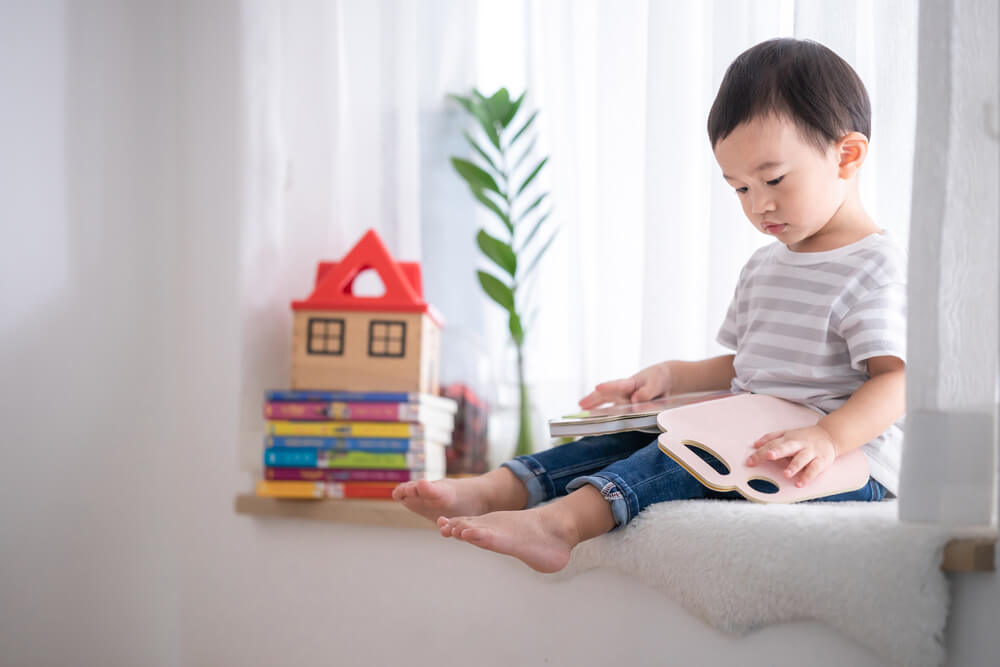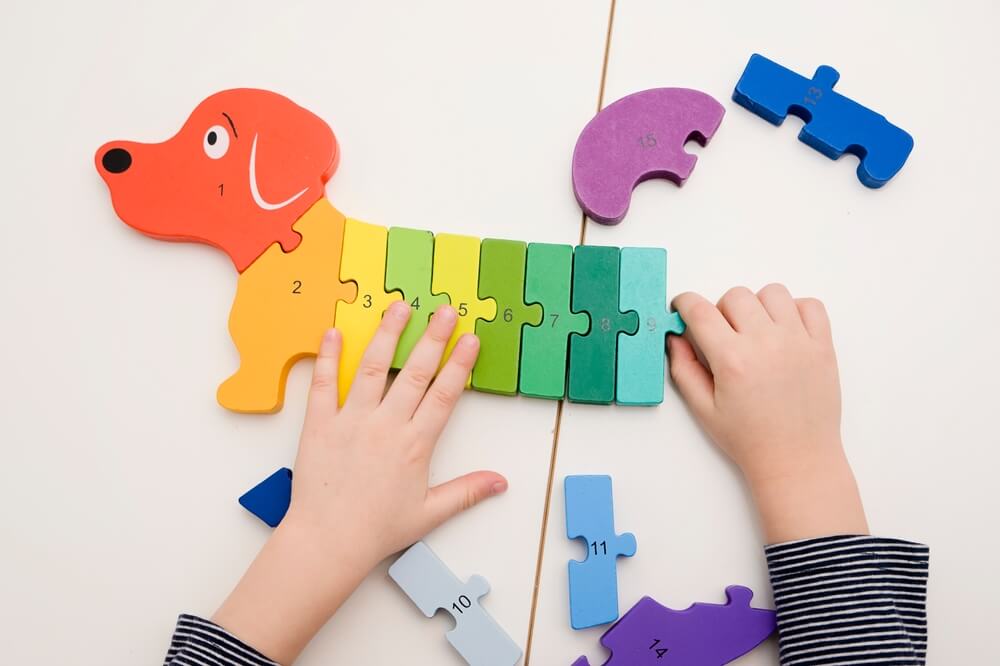Hand-eye coordination is a fundamental skill that plays a crucial role in your child’s overall development. This skill involves the synchronization of vision and hand movement, allowing your little one to engage in activities that require precision and control. As parents, nurturing good hand-eye coordination in your child can contribute to their success in various aspects of life, from academics to sports.
In this guide, the team at Children’s Medical Center of South Florida will explore the importance of hand-eye coordination and provide a comprehensive list of fun and educational hand-eye coordination activities for kids.
Understanding Hand-Eye Coordination
Hand-eye coordination is the ability to coordinate visual information received through the eyes with precise movements of the hands. This skill is essential for everyday tasks such as writing, catching a ball, or even threading a needle. The development of good hand-eye coordination in children is a gradual process that evolves as they grow and engage in diverse activities.
Why Hand-Eye Coordination Matters
Academic Success
Hand-eye coordination stands as a silent ally in the pursuit of academic excellence. The intricate link between visual perception and fine motor skills is pivotal for tasks such as writing and drawing. When a child possess strong hand-eye coordination, they can wield a pencil with precision, crafting letters and shapes with accuracy. This foundation in fine motor skills lays the groundwork for successful engagement in academic endeavors, from early handwriting exercises to more complex tasks as they progress through their education. Children with well-developed hand-eye coordination often find themselves at an advantage, seamlessly translating their thoughts onto paper and navigating the academic landscape with confidence.
Sports Performance
In the dynamic world of sports, hand-eye coordination emerges as a game-changer. Whether it’s the grace of catching a flying ball, the precision of hitting a tennis ball, or the focus required for aiming at a target, sports activities are a playground for hand-eye coordination. Developing this skill becomes a passport to enhanced performance and increased enjoyment in physical pursuits. As children refine their ability to synchronize their visual input with precise hand movements, they gain a competitive edge in various sports. Hand-eye coordination not only fuels athletic prowess but also fosters a love for physical activities, contributing to a healthier lifestyle.
Daily Living Skills
Beyond the academic and sports realms, the impact of hand-eye coordination extends into the fabric of daily living. Think about the seemingly mundane yet essential tasks like buttoning a shirt or tying shoelaces. These activities involve a symphony of intricate hand movements guided by visual cues. A child with good hand-eye coordination approaches these tasks with finesse, navigating zippers, buttons, and laces with ease and independence. The ability to perform these daily living skills autonomously contributes to a child’s self-esteem and fosters a sense of accomplishment in their daily routine.
Cognitive Development
The intricate dance between the eyes and hands not only shapes physical abilities but also plays a profound role in cognitive development. Engaging in activities that challenge hand-eye coordination serves as a workout for the brain, stimulating neural connectivity and promoting cognitive growth. When a child juggle visual information with precise hand movements, they are not just honing motor skills; they are fostering an environment that nurtures cognitive functions. This connectivity becomes the bridge between perception and action, laying the groundwork for enhanced problem-solving skills, spatial awareness, and overall cognitive dexterity.

Hand-Eye Coordination Activities for Kids
Ball Games
- Catch and Throw: Start with a softball and gradually progress to smaller ones as your child’s coordination improves.
- Balloon Volleyball: Use a balloon for a gentler introduction to hand-eye coordination through hitting and tapping.
Building with Blocks
- Stacking Blocks: Encourage your child to build towers using different-sized blocks, refining their hand-eye coordination and spatial awareness.
Art and Craft Activities
- Drawing and Coloring: Provide your child with coloring books or blank sheets and let them explore drawing and coloring.
- Cutting and Pasting: Engage in activities that involve cutting shapes and pasting them onto paper, enhancing both fine motor skills and hand-eye coordination.
Puzzle Play
- Jigsaw Puzzles: Choose puzzles with varying difficulty levels to challenge your child’s cognitive and hand-eye coordination abilities.
- Building Puzzles: Construction puzzles, where pieces fit together to create a structure, also promote good hand-eye coordination.
Outdoor Play
- Biking: Riding a bike requires coordination between hands (steering) and eyes (judging distance and speed).
- Hopscotch: This classic game involves jumping and tossing a marker, honing both gross and fine motor skills.
Musical Instruments
- Playing Drums: Allow your child to experiment with rhythm by playing a drum or tapping on various surfaces.
- Using a Xylophone: Striking individual keys on a xylophone helps refine hand-eye coordination through precise movements.
Technology-Based Activities
- Interactive Games: Educational apps and games on tablets or smartphones can provide a modern and engaging way to enhance hand-eye coordination.
- Mouse and Keyboard Skills: Introduce your child to using a computer mouse and keyboard for age-appropriate activities.
Cooking Together
- Measuring and Pouring: Involve your child in measuring ingredients and pouring them into bowls, enhancing hand-eye coordination and mathematical skills.

Incorporating Hand-Eye Coordination into Daily Life
Be Patient
In the journey to developing hand-eye coordination, patience is not just a virtue; it’s a guiding principle. Recognize that this is a gradual process, and each child progresses at their own pace. Some may quickly grasp certain activities, while others might take more time. As a parent, your role is to provide a supportive environment where your child feels encouraged to explore and practice. Celebrate small victories and offer positive reinforcement to motivate them along the way. Patience allows your child to build confidence in their abilities, fostering a positive attitude towards learning and skill development.
Variety is Key
The beauty of developing hand-eye coordination lies in the diversity of activities that can contribute to its enhancement. Offer your child a smorgasbord of activities that engage different aspects of hand-eye coordination. From ball games to arts and crafts projects, each activity targets specific skills while keeping the overall goal in mind. Variety not only prevents monotony but also ensures a well-rounded development of hand-eye coordination. This approach allows your child to discover their preferences and strengths, making the learning process more enjoyable and comprehensive.
Make it Fun
Transforming learning into a delightful adventure is a powerful tool in fostering hand-eye coordination. Turn activities into games, challenges, or imaginative quests. Whether it’s a scavenger hunt, an art project with a creative twist, or a playful ball game, injecting an element of fun engages your child’s interest and encourages active participation. The joyous association with these activities creates positive memories, making your child more enthusiastic about honing their hand-eye coordination skills. Fun not only motivates but also cultivates a lifelong love for learning.
Encourage Independence
Empower your child to take the lead in activities that promote hand-eye coordination. Allowing them to choose the next game or decide how to approach a puzzle fosters a sense of independence. This independence, in turn, boosts their confidence as they navigate challenges and conquer tasks on their own terms. Providing a supportive environment where mistakes are viewed as opportunities to learn cultivates resilience and a can-do attitude. As your child gains independence, they develop a belief in their capabilities, setting the stage for continued growth and exploration.
Finishing Thoughts
Nurturing good hand-eye coordination in your child is a journey filled with exploration and discovery. These activities not only enhance their physical and cognitive development but also create memorable moments of bonding. As you engage in these activities together, observe your child’s progress, celebrate their achievements, and enjoy witnessing the unfolding of their hand-eye coordination skills. In doing so, you contribute to their overall growth and set the stage for a future filled with confidence and capability.
On a similar note, if you want to learn more about hand-eye coordination or to inform yourself about the importance of well-child checks, consider scheduling an appointment with us today.


